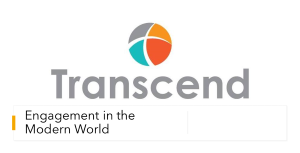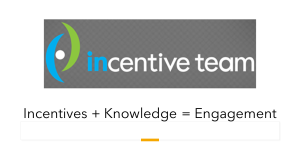Brand Alignment Case Study - How to Build Consensus Around Purpose
This case study, based on a question-and-answer session with Marian Baldini, President and CEO of KenCrest, a large not-for-profit based in Blue Bell PA, demonstrates how her organization uses a systematic alignment process provided by BCAT Brand and Culture Alignment to help launch a major new organization-wide initiative.
 KenCrest, founded in 1905, is a not-for-profit organization with corporate offices in Blue Bell PA that provides educational services to children and families in Philadelphia and community-based support to people with developmental or intellectual disabilities and their families throughout the age continuum--from newborns to senior adults—in Pennsylvania, Delaware, and Connecticut. KenCrest’s services and supports include early intervention, early learning programming, personal supports, community living with specialties in medically complexed diagnoses, Lifesharing, nursing and clinical supports, community participation programs, and employment options. The organization employs about 2,000 people and has annual enterprise revenue of about $135 million.
KenCrest, founded in 1905, is a not-for-profit organization with corporate offices in Blue Bell PA that provides educational services to children and families in Philadelphia and community-based support to people with developmental or intellectual disabilities and their families throughout the age continuum--from newborns to senior adults—in Pennsylvania, Delaware, and Connecticut. KenCrest’s services and supports include early intervention, early learning programming, personal supports, community living with specialties in medically complexed diagnoses, Lifesharing, nursing and clinical supports, community participation programs, and employment options. The organization employs about 2,000 people and has annual enterprise revenue of about $135 million. .
ESM: What issues were you seeking to address by engaging BCAT Brand and Cultural Alignment?
-2.jpg) Baldini: We had started a project we called the Architecture Project. The goal was to align structure, processes and culture to the vision, mission, and strategy of the organization. We had been struggling trying to get traction on new ideas and goals; one of our consultants suggested that maybe our culture was the culprit. We met with Al Cini and engaged in the BCAT alignment process.
Baldini: We had started a project we called the Architecture Project. The goal was to align structure, processes and culture to the vision, mission, and strategy of the organization. We had been struggling trying to get traction on new ideas and goals; one of our consultants suggested that maybe our culture was the culprit. We met with Al Cini and engaged in the BCAT alignment process.
ESM: What were the benefits you were seeking to accomplish?
Baldini: Speed in decision making. Improved accountability and data. Maintaining our commitment to individuals. Growing a culture where individual staff contributions would add to innovation.
ESM: How did the process work in functional terms?
Baldini: The BCAT process helped us identify our ideal selves, which helped clarify what we were missing in action. In the end we created a visual aid which we use actively and refer to frequently. We aligned our use of language to reinforce our alignment to the culture we aspire to achieve. We dropped several behaviors that were getting in our way.
As time has progressed the BCAT method has helped us identify the right resources to promote our goals. For example, we asked many on our team read the book, Turn the Ship Around, by L. David Marquet. It was a perfect fit for us to see possibilities rather than our more bureaucratic past behavior.
ESM: What were the results as far as you are concerned?
Baldini: We have improved alignment and are moving to interdependence. The commitment to innovation, our dominant outcome, is visible throughout. Our work toward harmony is now in the forefront, with greater accountability for collaboration and greater interest and use of tools to help.
Our red area, resolve and measurement, has been a huge gain for us, and we are comfortable discussing it, expecting to see and enjoy a little healthy competition for results. Action planning has improved with the use of project plans, stand up meetings, and deliverable reviews. Overall, I have to say I am thrilled. We learned about BCAT at just the right time. It inspired more learning and skill building.
For More Information
Al Cini
Managing Partner, BCAT Partners, LLC
609-238-5070
609-238-5070
al.cini@getbcat.com
Master the “S” of Environmental, Social, Governance (ESG), A.k.a. Stakeholder Capitalism
The Enterprise Engagement Alliance at TheEEA.org is the world’s first and only organization that focuses on outreach, certification and training, and advisory services to help organizations achieve their goals by fostering the proactive involvement of all stakeholders. This includes customers, employees, distribution and supply chain partners, and communities, or anyone connected to an organization’s success.
Training and Thought Leadership
- Founded in 2008, the Enterprise Engagement Alliance provides outreach, learning and certification in Enterprise Engagement, an implementation process for the “S” or Social of Stakeholder Capitalism and Human Capital Management and measurement of engagement across the organization.
- The Enterprise Engagement Alliance provides a training and certification program for business leaders, practitioners, and solution providers, as well as executive briefings and human capital gap analyses for senior leaders.
- The EEA produces an education program for CFOs for the CFO.University training program on Human Capital Management.
- Join the EEA to become a leader in the implementation of the “S” of ESG and Stakeholder Capitalism.
- The ESM information portal and The Enterprise Engagement Advisors Network solution provider marketplace cover all aspects of stakeholder engagement, and the EEA information library lists dozens of resources.
- The RRN information portal and Brand Media Coalition marketplace address the use of brands for gifting, incentives, recognition, and promotions. The BMC information library provides information and research resources.
Video Learning
The EEA Human Capital Management and ROI of Engagement YouTube channel features a growing library of 30- to 60-minute panel discussions with leading experts in all areas of engagement and total rewards.
- Enterprise Engagement for CEOs: The Little Blue Book for People-Centric Capitalists. A quick guide for CEOs.
- Enterprise Engagement: The Roadmap 5th Edition implementation guide. A comprehensive textbook for practitioners, academics, and students.
Enterprise Engagement Advisory Services
The Engagement Agency helps:
- Organizations of all types develop strategic Stakeholder Capitalism and Enterprise Engagement processes and human capital management and reporting strategies; conduct human capital gap analyses; design and implement strategic human capital management and reporting plans that address DEI (Diversity, Equity, and Inclusion), and assist with managed outsourcing of engagement products and services.
- Human resources, sales and marketing solution providers profit from the emerging discipline of human capital management and ROI of engagement through training and marketing services.
- Investors make sense of human capital reporting by public companies.
- Buyers and sellers of companies in the engagement space or business owners or buyers who seek to account for human capital in their mergers and acquistions.
For more information: Contact Bruce Bolger at Bolger@TheICEE.org or call 914-591-7600, ext. 230.



















